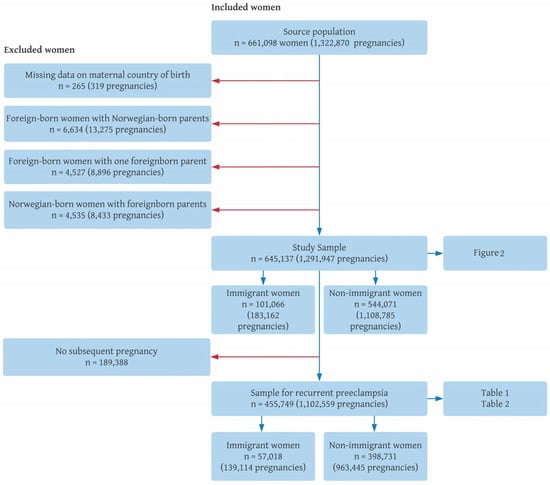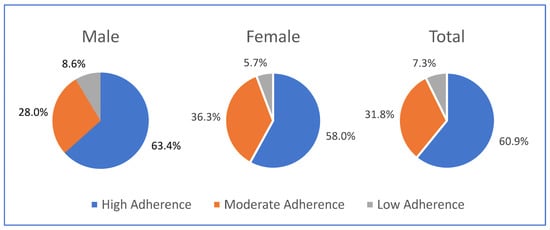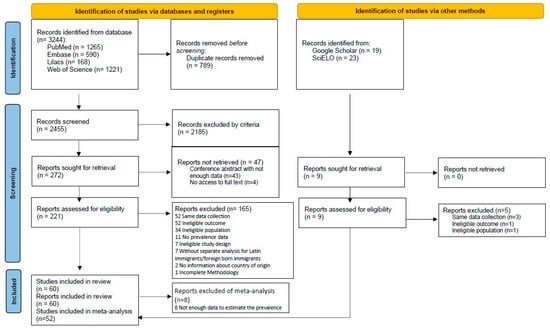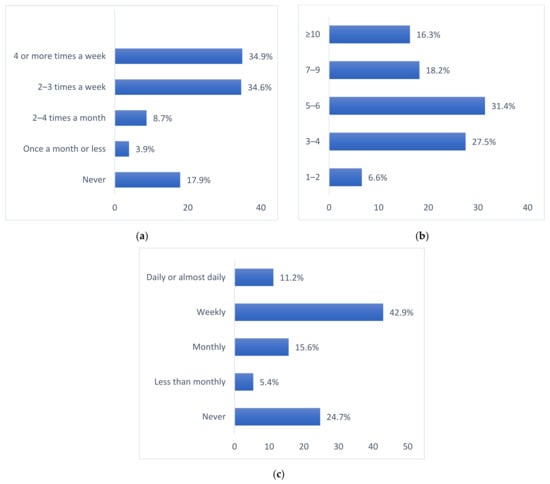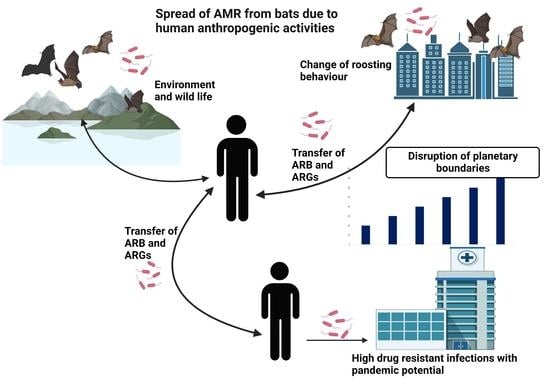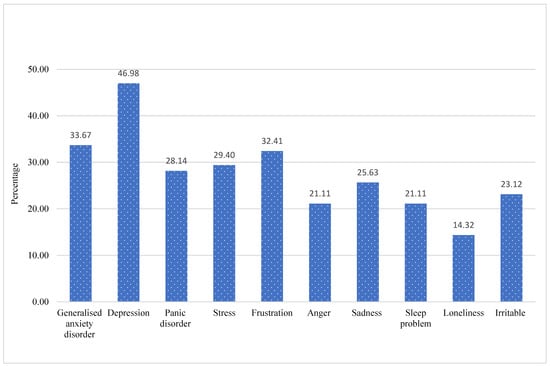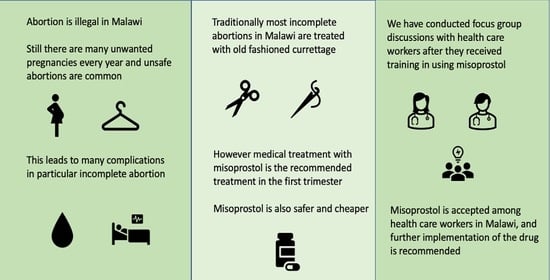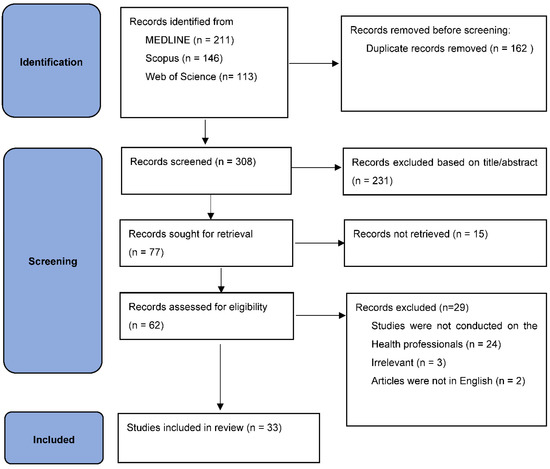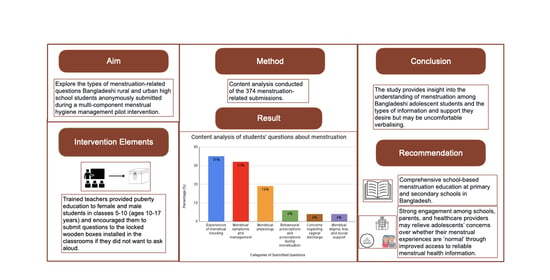Exclusive Collection for Youth and Junior Researchers in Section Global Health
Share This Topical Collection
Editors
 Prof. Dr. Jon Øyvind Odland
Prof. Dr. Jon Øyvind Odland
 Prof. Dr. Jon Øyvind Odland
Prof. Dr. Jon Øyvind Odland
E-Mail
Website
Collection Editor
Department of Public Health and Nursing, UiT The Arctic University of Norway, 9037 Tromso, Norway
Interests: public health; epidemiology; environmental health; reproductive health; pregnancy care; climate change
Special Issues, Collections and Topics in MDPI journals
 Prof. Dr. Johanne Sundby
Prof. Dr. Johanne Sundby
 Prof. Dr. Johanne Sundby
Prof. Dr. Johanne Sundby
E-Mail
Website
Collection Editor
Department of Community Medicine and Global Health, The University of Oslo, 0316 Oslo, Norway
Interests: maternal and reproductive health services; newborn and women's reproductive health; quality of care
Special Issues, Collections and Topics in MDPI journals
 Prof. Dr. Thorkild Tylleskär
Prof. Dr. Thorkild Tylleskär
 Prof. Dr. Thorkild Tylleskär
Prof. Dr. Thorkild Tylleskär
E-Mail
Website
Collection Editor
Centre for International Health, University of Bergen, 5020 Bergen, Norway
Interests: capacity development; clinical trials; epidemiology; global health; health informatics; HIV; implementation research; international health; maternal and child health; neonatal care; nutrition; pediatrics; perinatal mortality; public health
Topical Collection Information
Dear Colleagues,
We are proud to invite a young generation of skilled scientists with an interest in global health to present their studies in peer-reviewed papers in our Special Issue. Research schools are important for networking between generations and between young scientists with different interests. Crossdisciplinary research will be important in the future. We want to increase our knowledge through high-level scientific projects for implementation in public health and to reduce inequalities in all countries of the world in politically difficult times. Some of us have devoted our lives to global health. We want to give the next generation possibilities for new and innovative thinking so that you can build on our experience and make things better than we managed to do. This Special Issue will open for all possible topics related to global health, e.g., reproductive health, occupational health, child health and adolescent health, infectious diseases, NCDs, and “forgotten health problems”. We welcome qualitative as well as quantitative studies, in addition to mixed methods. We have excellent reviewers in a journal with a rapidly increasing impact as well as a quick and thorough review process. You are welcome to join us in this very Special Issue. Connection to our research school or other research schools is beneficial, but no connection is not a barrier to submit a good paper.
Prof. Dr. Jon Øyvind Odland
Prof. Dr. Elisabeth Darj
Prof. Dr. Johanne Sundby
Prof. Dr. Thorkild Tylleskär
Guest Editors
Manuscript Submission Information
Manuscripts should be submitted online at www.mdpi.com by registering and logging in to this website. Once you are registered, click here to go to the submission form. Manuscripts can be submitted until the deadline. All submissions that pass pre-check are peer-reviewed. Accepted papers will be published continuously in the journal (as soon as accepted) and will be listed together on the collection website. Research articles, review articles as well as short communications are invited. For planned papers, a title and short abstract (about 100 words) can be sent to the Editorial Office for announcement on this website.
Submitted manuscripts should not have been published previously, nor be under consideration for publication elsewhere (except conference proceedings papers). All manuscripts are thoroughly refereed through a single-blind peer-review process. A guide for authors and other relevant information for submission of manuscripts is available on the Instructions for Authors page. International Journal of Environmental Research and Public Health is an international peer-reviewed open access monthly journal published by MDPI.
Please visit the Instructions for Authors page before submitting a manuscript.
The Article Processing Charge (APC) for publication in this open access journal is 2500 CHF (Swiss Francs).
Submitted papers should be well formatted and use good English. Authors may use MDPI's
English editing service prior to publication or during author revisions.
Published Papers (11 papers)
Open AccessArticle
Pelvic Floor Disorders and Pelvic Floor Muscle Exercise: A Survey on Knowledge, Attitude, and Practice among Pregnant Women in Northwest Ethiopia
by
Merete Kolberg Tennfjord, Belayneh Ayanaw Kassie, Zelalem Mengistu Gashaw, Mengstu Melkamu Asaye, Haymanot Alem Muche, Tibebu Tadesse Fenta, Kalkidan Nigussie Chala and Karolina S. Mæland
Cited by 3 | Viewed by 4606
Abstract
The purpose of the study was to investigate 1: overall knowledge of pelvic organ prolapse (POP) and urinary incontinence (UI) as well as knowledge, attitudes, and practice of pelvic floor muscle exercise (PFME); and 2: the association of these factors with parity in
[...] Read more.
The purpose of the study was to investigate 1: overall knowledge of pelvic organ prolapse (POP) and urinary incontinence (UI) as well as knowledge, attitudes, and practice of pelvic floor muscle exercise (PFME); and 2: the association of these factors with parity in pregnant women in Gondar, Ethiopia. A facility-based cross-sectional study was performed in the Central Gondar zone, northwest Ethiopia between February and April 2021. The associations between parity and knowledge of POP and UI, and knowledge, attitude, and practice towards PFME were estimated using logistics regression models and presented as crude and adjusted odds ratios with 95% confidence intervals. Nulliparous women were used as the reference. Adjustments were made for maternal age, antenatal care visits, and level of education. The study sample comprised 502 pregnant women: 133 nulliparous, and 369 multiparous. We found no association between parity and knowledge of POP, UI, or knowledge, attitude, and practice toward PFME. The sum score indicated poor knowledge about both POP, UI, and PFME in the study population, and poor attitude and practice of PFME. Despite a high attendance in antenatal care services, knowledge, attitude, and practice were poor, indicating a need for quality improvement of the services.
Full article
Open AccessArticle
Risk of Subsequent Preeclampsia by Maternal Country of Birth: A Norwegian Population-Based Study
by
Karolina S. Mæland, Nils-Halvdan Morken, Erica Schytt, Vigdis Aasheim and Roy M. Nilsen
Cited by 2 | Viewed by 3093
Abstract
In this nationwide population-based study, we investigated the associations of preeclampsia in the first pregnancy with the risk of preeclampsia in the second pregnancy, by maternal country of birth using data from the Medical Birth Registry of Norway and Statistics Norway (1990–2016). The
[...] Read more.
In this nationwide population-based study, we investigated the associations of preeclampsia in the first pregnancy with the risk of preeclampsia in the second pregnancy, by maternal country of birth using data from the Medical Birth Registry of Norway and Statistics Norway (1990–2016). The study population included 101,066 immigrant and 544,071 non-immigrant women. Maternal country of birth was categorized according to the seven super-regions of the Global Burden of Disease study (GBD). The associations between preeclampsia in the first pregnancy with preeclampsia in the second pregnancy were estimated using log-binomial regression models, using no preeclampsia in the first pregnancy as the reference. The associations were reported as adjusted risk ratios (RR) with 95% confidence intervals (CI), adjusted for chronic hypertension, year of first childbirth, and maternal age at first birth. Compared to those without preeclampsia in the first pregnancy, women with preeclampsia in the first pregnancy were associated with a considerably increased risk of preeclampsia in the second pregnancy in both immigrant (
n = 250; 13.4% vs. 1.0%; adjusted RR 12.9 [95% CI: 11.2, 14.9]) and non-immigrant women (
n = 2876; 14.6% vs. 1.5%; adjusted RR 9.5 [95% CI: 9.1, 10.0]). Immigrant women from Latin America and the Caribbean appeared to have the highest adjusted RR, followed by immigrant women from North Africa and the Middle East. A likelihood ratio test showed that the variation in adjusted RR across all immigrant and non-immigrant groups was statistically significant (
p = 0.006). Our results suggest that the association between preeclampsia in the first pregnancy and preeclampsia in the second pregnancy might be increased in some groups of immigrant women compared with non-immigrant women in Norway.
Full article
►▼
Show Figures
Open AccessArticle
Factors Associated with Medication Adherence among Patients with Type 2 Diabetes Mellitus: A Hospital-Based Cross-Sectional Study in Nepal
by
Pushpanjali Shakya, Archana Shrestha, Biraj Man Karmacharya, Donald E. Morisky and Bård Eirik Kulseng
Cited by 11 | Viewed by 6878
Abstract
As diabetes increases globally, high mortality increases due to complications of uncontrolled sugar. Medication adherence is important to control blood sugar and prevent its complications. Objective of the study was to identify factors associated with medication adherence among type 2 diabetes patients. A
[...] Read more.
As diabetes increases globally, high mortality increases due to complications of uncontrolled sugar. Medication adherence is important to control blood sugar and prevent its complications. Objective of the study was to identify factors associated with medication adherence among type 2 diabetes patients. A cross-sectional study was conducted among 343 patients visiting Dhulikhel Hospital, Nepal, for their fasting blood sugar test from September to December 2016. Inclusion criteria: patients with type 2 diabetes, under diabetes medication for past three months (minimum), age ≥ 18 years. The outcome of the study was medication adherence measured using the eight-item Morisky medication adherence scale (MMAS-8) (© 2006 Donald E. Morisky). Multivariate logistic regression was used for the analysis. Results showed that 61% of respondents had high medication adherence; adherence was positively associated with formal education [AOR: 2.43 (95% CI: 1.34, 4.39)] and attendance at diabetes counseling [AOR: 1.76 (95% CI: 1.02, 3.04)] after adjusting for age, occupation, medicine intake duration and diabetes medicine types. The study concluded that formal education and attendance at diabetes counseling positively affected patients’ adherence to medicine. We encourage healthcare institutions to provide counseling services to all the patients with type 2 diabetes and focus more on those who are less educated.
Full article
►▼
Show Figures
Open AccessSystematic Review
Systematic Review and Meta-Analysis of Metabolic Syndrome and Its Components in Latino Immigrants to the USA
by
Talita Monsores Paixão, Liliane Reis Teixeira, Carlos Augusto Ferreira de Andrade, Debora Sepulvida, Martha Martinez-Silveira, Camila Nunes and Carlos Eduardo Gomes Siqueira
Cited by 5 | Viewed by 3411
Abstract
The Metabolic Syndrome (MetS) is an increasingly prevalent condition globally. Latino populations in the USA have shown an alarming increase in factors associated with MetS in recent years. The objective of the present systematic review was to determine the prevalence of MetS and
[...] Read more.
The Metabolic Syndrome (MetS) is an increasingly prevalent condition globally. Latino populations in the USA have shown an alarming increase in factors associated with MetS in recent years. The objective of the present systematic review was to determine the prevalence of MetS and its risk factors in immigrant Latinos in the USA and perform a meta-analysis of those prevalence. The review included cross-sectional, cohort, or case–control studies involving adult immigrant Latinos in the USA, published during the period 1980–2020 in any language. Studies involving individuals who were pregnant, aged <18 years, immigrant non-Latinos, published outside the 1980–2020 period, or with other design types were excluded. The Pubmed, Web of Science, Embase, Lilacs, Scielo, and Google Scholar databases were searched. The risk of bias was assessed using the checklists of the Joanna Briggs Institute. The review included 60 studies, and the meta-analysis encompassed 52 studies. The pooled prevalence found for hypertension, diabetes, general obesity, and abdominal obesity were 28% (95% Confidence Interval (CI): 23–33%), 17% (95% CI: 14–20%), 37% (95% CI: 33–40%), and 54% (95% CI: 48–59%), respectively. The quality of the evidence of the primary studies was classified as low or very low. Few studies including immigrants from South America were identified. Further studies of those immigrants are needed due to the cultural, dietary, and language disparities among Latin American countries. The research protocol was registered with the Open Science Framework (OSF).
Full article
►▼
Show Figures
Open AccessArticle
Harmful Alcohol Use and Associated Socio-Structural Factors among Female Sex Workers Initiating HIV Pre-Exposure Prophylaxis in Dar es Salaam, Tanzania
by
Hanne Ochieng Lichtwarck, Method Rwelengera Kazaura, Kåre Moen and Elia John Mmbaga
Cited by 7 | Viewed by 3245
Abstract
Harmful alcohol use is an important risk factor for premature mortality and morbidity and associated with increased HIV risk and lower uptake of and adherence to HIV interventions. This study aimed to assess the extent of harmful alcohol use and associated socio-structural vulnerability
[...] Read more.
Harmful alcohol use is an important risk factor for premature mortality and morbidity and associated with increased HIV risk and lower uptake of and adherence to HIV interventions. This study aimed to assess the extent of harmful alcohol use and associated socio-structural vulnerability factors among female sex workers in Dar es Salaam, Tanzania, a key population in the HIV epidemic. Data from a study of female sex workers initiating pre-exposure prophylaxis (PrEP) recruited through respondent driven sampling were used. We assessed harmful alcohol use with the Alcohol Use Disorders Identification Test (AUDIT) defined as having an AUDIT score ≥ 16. Associations between harmful alcohol use and socio-structural factors were assessed using logistic regression with marginal standardization. Of the 470 women recruited, more than one third (37.3%) had a drinking pattern suggestive of harmful alcohol use. Such use was independently associated with sex work-related mobility (aPR: 1.36, 95% CI: 1.11–1.61), arrest/incarceration (aPR: 1.55, 95% CI: 1.27–1.84) and gender-based violence (aPR: 1.31, 95% CI: 1.06–1.56). The high prevalence of harmful alcohol use and the interconnectedness with socio-structural factors indicate a need for a holistic programmatic approach to health for female sex workers. Programming should not solely direct attention to individual behavior but also include strategies aiming to address socio-structural vulnerabilities.
Full article
►▼
Show Figures
Open AccessReview
Evidence of Antimicrobial Resistance in Bats and Its Planetary Health Impact for Surveillance of Zoonotic Spillover Events: A Scoping Review
by
Popy Devnath, Nabil Karah, Jay P. Graham, Elizabeth S. Rose and Muhammad Asaduzzaman
Cited by 26 | Viewed by 5832
Abstract
As a result of the COVID-19 pandemic, as well as other outbreaks, such as SARS and Ebola, bats are recognized as a critical species for mediating zoonotic infectious disease spillover events. While there is a growing concern of increased antimicrobial resistance (AMR) globally
[...] Read more.
As a result of the COVID-19 pandemic, as well as other outbreaks, such as SARS and Ebola, bats are recognized as a critical species for mediating zoonotic infectious disease spillover events. While there is a growing concern of increased antimicrobial resistance (AMR) globally during this pandemic, knowledge of AMR circulating between bats and humans is limited. In this paper, we have reviewed the evidence of AMR in bats and discussed the planetary health aspect of AMR to elucidate how this is associated with the emergence, spread, and persistence of AMR at the human–animal interface. The presence of clinically significant resistant bacteria in bats and wildlife has important implications for zoonotic pandemic surveillance, disease transmission, and treatment modalities. We searched MEDLINE through PubMed and Google Scholar to retrieve relevant studies (
n = 38) that provided data on resistant bacteria in bats prior to 30 September 2022. There is substantial variability in the results from studies measuring the prevalence of AMR based on geographic location, bat types, and time. We found all major groups of Gram-positive and Gram-negative bacteria in bats, which are resistant to commonly used antibiotics. The most alarming issue is that recent studies have increasingly identified clinically significant multi-drug resistant bacteria such as Methicillin Resistant Staphylococcus aureus (MRSA), ESBL producing, and Colistin resistant Enterobacterales in samples from bats. This evidence of superbugs abundant in both humans and wild mammals, such as bats, could facilitate a greater understanding of which specific pathways of exposure should be targeted. We believe that these data will also facilitate future pandemic preparedness as well as global AMR containment during pandemic events and beyond.
Full article
►▼
Show Figures
Open AccessArticle
‘I Doubt Myself and Am Losing Everything I Have since COVID Came’—A Case Study of Mental Health and Coping Strategies among Undocumented Myanmar Migrant Workers in Thailand
by
Tual Sawn Khai and Muhammad Asaduzzaman
Cited by 12 | Viewed by 6783
Abstract
Migrant populations have always been vulnerable to a high burden of social exclusion, mental disorders, physical illnesses, and economic crises. The current COVID-19 pandemic has further created a frantic plight among them, particularly for undocumented migrant workers in the global south. We have
[...] Read more.
Migrant populations have always been vulnerable to a high burden of social exclusion, mental disorders, physical illnesses, and economic crises. The current COVID-19 pandemic has further created a frantic plight among them, particularly for undocumented migrant workers in the global south. We have conducted a mixed method study among the undocumented Myanmar migrant workers (UMMWs) in Thailand to explore how the COVID-19 disruption has impacted their mental health and what coping strategies they have adopted. Following the onset of COVID-19 and the recent coup d’état in Myanmar, our current study is the first attempt to understand the mental health status and predicament of this neglected migrant group. A total of 398 UMMWs were included in the online survey, of which 23 participated in qualitative interviews. The major mental health issues reported by the study participants were depression, generalized anxiety disorder, frustration, stress, and panic disorders, while loss of employment, worries about the pandemic, social stigma, lack of access to healthcare, lockdown, and fear of detention were the predominant contributing factors. In response, we identified two key coping mechanisms: coping at a personal level (listening to music, playing online game, praying, and self-motivation) and coping at a social level (chatting with family and friends and visiting religious institutions). These findings point to the importance of policy and intervention programs aimed at upholding mental health at such humanitarian conditions. Sustainable institutional mental health care support and social integration for the migrant workers, irrespective of their legal status, should be ensured.
Full article
►▼
Show Figures
Open AccessArticle
Experiences of Using Misoprostol in the Management of Incomplete Abortions: A Voice of Healthcare Workers in Central Malawi
by
Bertha Magreta Chakhame, Elisabeth Darj, Mphatso Mwapasa, Ursula Kalimembe Kafulafula, Alfred Maluwa, Grace Chiudzu, Address Malata, Jon Øyvind Odland and Maria Lisa Odland
Cited by 1 | Viewed by 6926
Abstract
Complications after abortion are a major cause of maternal death. Incomplete abortions are common and require treatment with surgical or medical uterine evacuation. Even though misoprostol is a cheaper and safer option, it is rarely used in Malawi. To improve services, an intervention
[...] Read more.
Complications after abortion are a major cause of maternal death. Incomplete abortions are common and require treatment with surgical or medical uterine evacuation. Even though misoprostol is a cheaper and safer option, it is rarely used in Malawi. To improve services, an intervention was performed to increase the use of misoprostol in post-abortion care. This study explored healthcare providers’ perceptions and experiences with misoprostol in the Malawian setting and their role in achieving effective implementation of the drug. A descriptive phenomenological study was conducted in three hospitals in central Malawi. Focus group discussions were conducted with healthcare workers in centres where the training intervention was offered. Participants were purposefully sampled, and thematic analysis was done. Most of the healthcare workers were positive about the use of misoprostol, knew how to use it and were confident in doing so. The staff preferred misoprostol to surgical treatment because it was perceived safe, effective, easy to use, cost-effective, had few complications, decreased hospital congestion, reduced workload, and saved time. Additionally, misoprostol was administered by nurses/midwives, and not just physicians, thus enhancing task-shifting. The results showed acceptability of misoprostol in post-abortion care among healthcare workers in central Malawi, and further implementation of the drug is recommended.
Full article
►▼
Show Figures
Open AccessArticle
Assessment of Mental Health and Quality of Life Status of Undergraduate Students in Indonesia during COVID-19 Outbreak: A Cross-Sectional Study
by
Hidayah Karuniawati, Nila Sari, Md. Sanower Hossain, Wan Ismahanisa Ismail, Aniq Hudiyah Bil Haq, Tri Yulianti, Taufik Taufik and Gardhika Rizky Sudarsono
Cited by 9 | Viewed by 5222
Abstract
The COVID-19 pandemic globally impacted physical, spiritual, and mental health (MH). The consequences significantly affected students’ quality of life (QoL) too. This cross-sectional study assessed MH status and its relationship to the QoL of college students in Indonesia. This study collected data (September
[...] Read more.
The COVID-19 pandemic globally impacted physical, spiritual, and mental health (MH). The consequences significantly affected students’ quality of life (QoL) too. This cross-sectional study assessed MH status and its relationship to the QoL of college students in Indonesia. This study collected data (September 2021–April 2022) online using the depression, anxiety, and stress scale-21 (DASS-21) to measure MH and the world health organization quality-of-life scale (WHOQoL-BREF) to measure the QoL. The data were analysed using SPSS with a bivariate and multivariate linear regression test. A total of 606 respondents participated in this study, with the majority being women (81.0%), aged 21–27 years (44.3%), and unmarried (98.5%) respondents. We observed 24.4% (n = 148) moderate depression, 18.3% (n = 111) very severe anxiety, and 21.1% (n = 128) moderate stress status. The QoL measurement determined that a moderate QoL in the physical and environmental health domains (>70%) and poor QoL in the psychological health domain (58.3%) were found. Gender, age, family support, history of COVID-19 diagnosis, family with COVID-19 diagnosis, vaccination status, and physical symptoms are significantly associated with MH status and QoL (
p-value < 0.05). This study demonstrated that COVID-19 was negatively related to college students’ MH and QoL. Targeted interventions may be needed to ameliorate both MH and QoL.
Full article
Open AccessReview
Planetary Health Education and Capacity Building for Healthcare Professionals in a Global Context: Current Opportunities, Gaps and Future Directions
by
Muhammad Asaduzzaman, Rifat Ara, Sadia Afrin, James E. Meiring and K. M. Saif-Ur-Rahman
Cited by 25 | Viewed by 8111
Abstract
The emerging concept of planetary health needs to be discussed in a more organized and sustainable way within the global public health and healthcare disciplines. Therefore, planetary health should be considered a cardinal component of the global academic framework for healthcare professionals. The
[...] Read more.
The emerging concept of planetary health needs to be discussed in a more organized and sustainable way within the global public health and healthcare disciplines. Therefore, planetary health should be considered a cardinal component of the global academic framework for healthcare professionals. The availability of related curricula and courses is crucial to equip health professionals in this relatively new discipline of planetary health. In this review article, we aimed to explore published articles and online databases of courses to summarize the available planetary health education opportunities and discussions for health professionals, to identify the gaps in resource allocation and to suggest future recommendations. We observed a visible resource inequity in the global south with the lack of a universal planetary health module for healthcare professionals. Additionally, there is minimal inclusion of allied health disciplines in this learning process. We therefore recommend a dedicated network of motivated healthcare professionals and regional hubs with an agenda to ensure a comprehensive, uniform, and inclusive planetary health education curriculum and practice.
Full article
►▼
Show Figures
Open AccessArticle
A Qualitative Content Analysis of Rural and Urban School Students’ Menstruation-Related Questions in Bangladesh
by
Deena Mehjabeen, Erin C. Hunter, Mehjabin Tishan Mahfuz, Moshammot Mobashara, Mahbubur Rahman and Farhana Sultana
Cited by 8 | Viewed by 5555
Abstract
Nearly half of Bangladeshi girls reach menarche without knowledge of menstruation and many fear seeking support due to pervasive menstrual stigma. We aimed to explore the types of menstruation-related information and support adolescent female and male students want but may be uncomfortable verbalising.
[...] Read more.
Nearly half of Bangladeshi girls reach menarche without knowledge of menstruation and many fear seeking support due to pervasive menstrual stigma. We aimed to explore the types of menstruation-related information and support adolescent female and male students want but may be uncomfortable verbalising. We installed a locked box in four school classrooms in rural and urban Bangladesh as part of a menstrual hygiene management pilot intervention between August 2017 and April 2018. Trained teachers provided puberty education to female and male students in classes 5–10 (ages 10–17 years) and encouraged students to submit questions anonymously to the boxes if they did not want to ask aloud. We conducted a content analysis of the 374 menstruation-related questions from a total of 834 submissions. Questions regarded experiences of menstrual bleeding (35%); menstrual symptoms and management (32%); menstrual physiology (19%); behavioural prescriptions and proscriptions (6%); concerns over vaginal discharge (4%); and menstrual stigma, fear, and social support (4%). Students wanted to understand the underlying causes of various menstrual experiences, and concern over whether particular experiences are indicative of health problems was pervasive. Ensuring comprehensive school-based menstruation education and strengthening engagement among schools, parents, and healthcare providers is important for improving access to reliable menstrual health information and may relieve adolescents’ concerns over whether their menstrual experiences are ’normal’.
Full article
►▼
Show Figures








